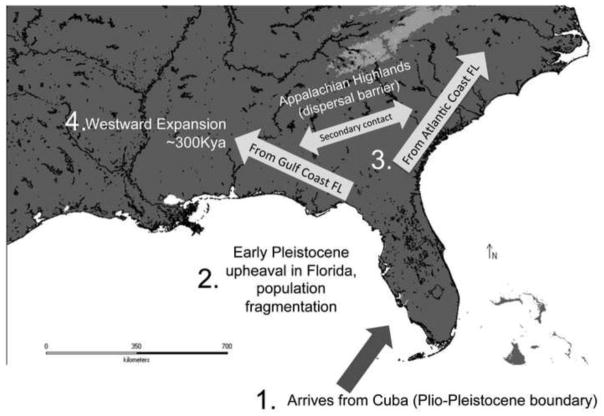Figure 6.
Hypothesized biogeographic scenario depicting the major events in the history of A. carolinensis in the southeastern United States inferred in this chapter. (1) Green anoles disperse from Cuba to the southern tip of Florida, where the ancestor of modern populations lived near the Plio-Pleistocene boundary. (2) During the Early Pleistocene, physiographic upheaval driven by rising sea levels during glacial cycles cause population fragmentation and divergence. (3) During the late part of the Early Pleistocene, the peninsula connects to the mainland again, and green anole populations living along the Central Atlantic Coast of Florida are able to disperse northwards towards the Carolinas. High elevations along the Appalachian Highlands (lighter shading indicates >750 meters elevation) most likely provided a dispersal barrier westward as unsuitable habitat. (4) During the Middle Pleistocene, populations living along the Gulf Coast of Florida began to colonize watersheds along the Gulf Coastal Plain, resulting in a westward expansion of green anoles across the Mississippi River and into Texas.

